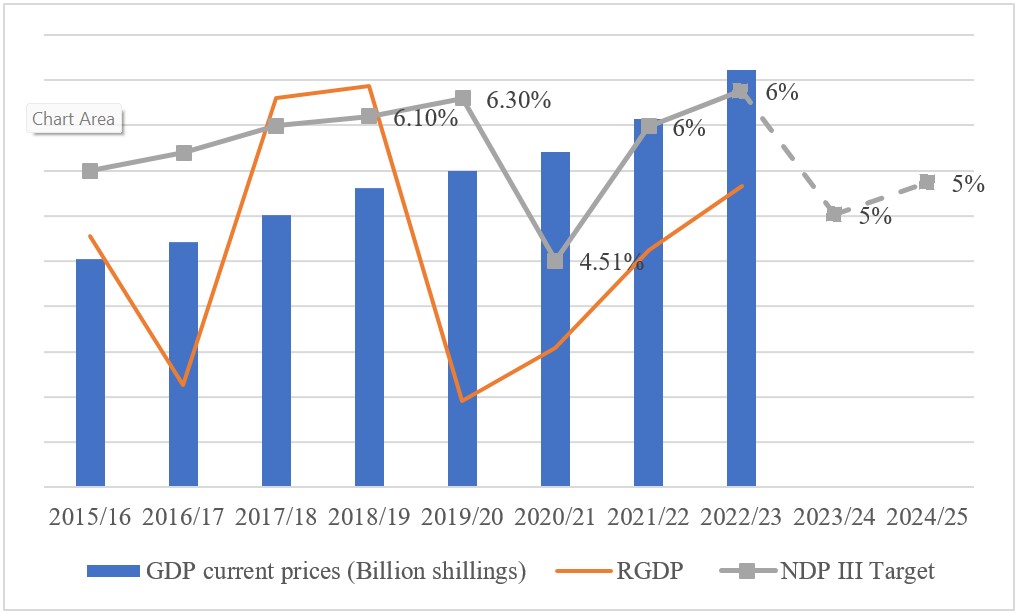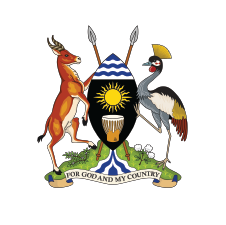Economic Growth
Overall, the performance of the real economy in the first three years of the NDPIII was below the planned targets and this had ramifications on the overall economy. While real GDP growth averaged 6.4 percent in FY2017/18 and FY2018/19, following the covid-19 pandemic and other challenges such as floods and locusts’ invasion in FY2019/20, real GDP growth significantly fell to 3.0 percent.
The country witnessed two lock downs, in March 2020 and June 2021, these measures had far reaching consequences on the economy as they disrupted production, distribution of supplies, investment decisions and in some ways national and household consumption spending.
The current surge in commodity prices and the need to contain inflationary pressures has made it more challenging to attain the earlier forecasted growth rates in the region of 6-7percent for the remaining years of the NDPIII.
Uganda is progressing towards middle-income status. While the actual real GDP growth over the three years of NDPIII implementation was lower than planned, there is a clear trend of economic recovery post COVID-19. In FY 2020/21, Uganda saw a growth of 3.5 percent up from 3.0 percent in FY 2019/20. This upward trajectory persisted into FY 2021/22 with a growth of 4.6 percent, though still below the NDP III target.
In the face of abrupt challenges posed by the Russia-Ukraine conflict and supply chain disruptions, preliminary estimates suggest GDP growth rate of 5.3 percent for FY 2022/23, underscoring the resilience of the economy. There is evidence that the economy could return to its pre-COVID-19 growth trajectory of 6-7 percent by FY2024/25.


